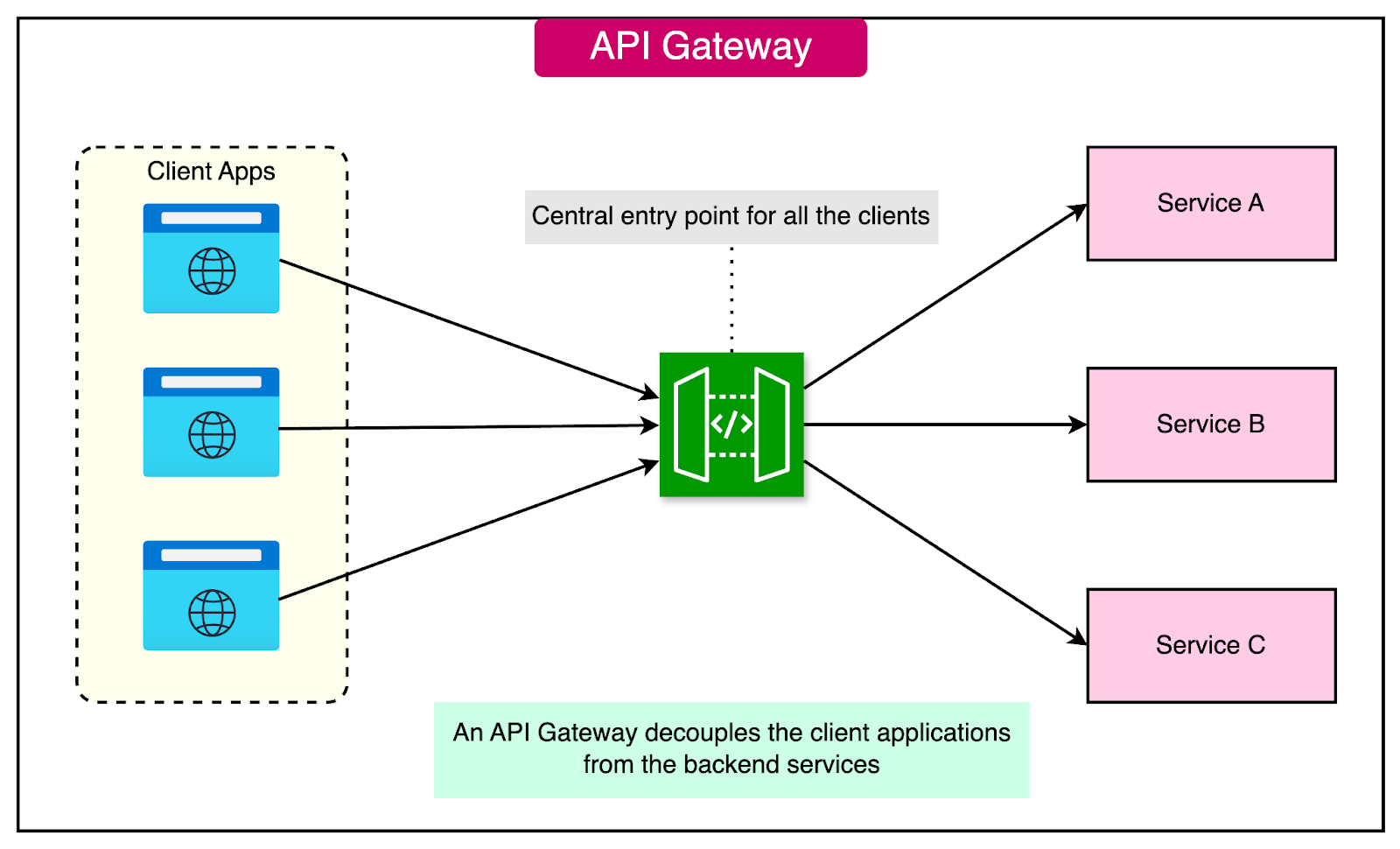In today’s digital ecosystem, APIs (Application Programming Interfaces) are the backbone of modern applications, enabling communication between different services and platforms. As systems scale and evolve into microservices architectures, managing these APIs becomes increasingly complex. This is where an API Gateway comes in.
What Is an API Gateway?
An API Gateway is a server that acts as an entry point for client requests. It sits between clients and a collection of backend services, routing requests, handling authentication, rate limiting, analytics, and more.
Think of it as a traffic manager that streamlines how requests are handled, ensuring security, reliability, and performance.
Key Functions of an API Gateway
Here are some of the core responsibilities of an API Gateway:
1. Request Routing
The gateway receives incoming API requests and routes them to the appropriate service. This decouples clients from direct interactions with microservices.
2. Authentication and Authorization
Before allowing access, the API Gateway can verify credentials, such as API keys, OAuth tokens, or JWTs, ensuring only authorized users can reach the backend.
3. Rate Limiting and Throttling
To prevent abuse and ensure fair usage, the gateway can limit the number of requests from a single client or IP address.
4. Load Balancing
API Gateways can distribute incoming traffic across multiple backend services to optimize performance and availability.
5. Caching
By caching common responses, API Gateways reduce latency and backend load, improving overall system performance.
6. Monitoring and Logging
Most API Gateways provide detailed logs and metrics to monitor usage, detect issues, and understand user behavior.
7. Transformation
They can modify requests and responses—for instance, converting between formats like XML and JSON or renaming fields.
Benefits of Using an API Gateway
Simplified Client Interface: Clients interact with a single endpoint regardless of the complexity of backend services.
Improved Security: Centralized control over authentication and request filtering.
Enhanced Scalability: Supports dynamic scaling and load balancing for growing applications.
Faster Development: Developers can focus on building services, while the gateway handles common concerns.
Common API Gateway Solutions
Amazon API Gateway (AWS)
Kong
NGINX
Apigee (by Google Cloud)
Traefik
Azure API Management
Each platform offers different features, from open-source to enterprise-grade solutions, depending on your project’s needs.
When Should You Use an API Gateway?
You should consider using an API Gateway if:
- You have multiple microservices or backend APIs.
- You want centralized control over access, logging, and monitoring.
- You plan to scale your application and need load balancing.
- Your APIs serve mobile apps, web apps, or third-party clients.
Final Thoughts
An API Gateway is a powerful tool in modern web architecture. It not only secures and optimizes your API traffic but also simplifies development and deployment. Whether you’re building a small app or managing a large suite of microservices, integrating an API Gateway is a strategic move toward scalability, reliability, and maintainability.

Leave a Reply